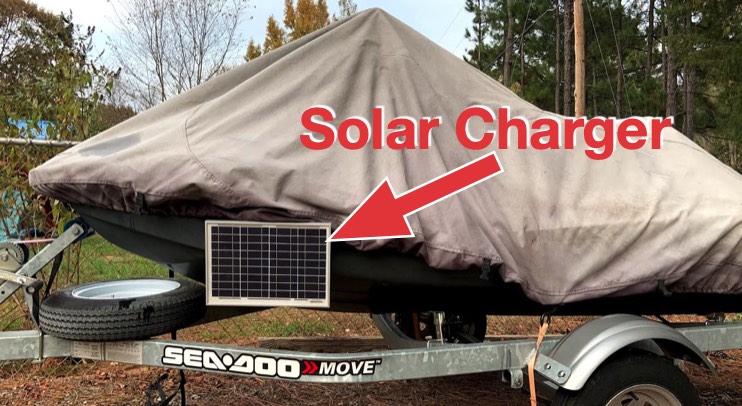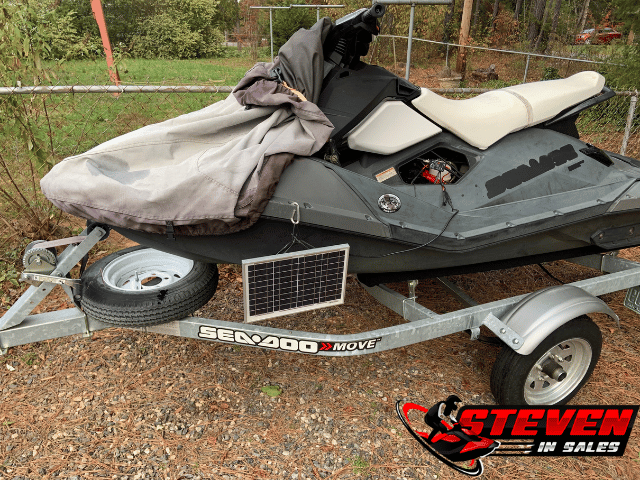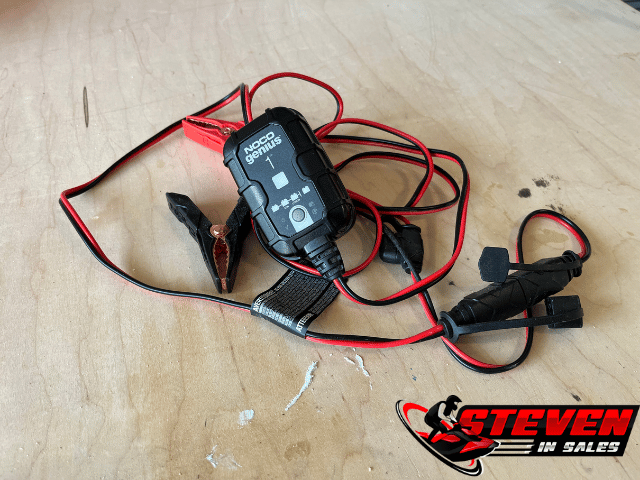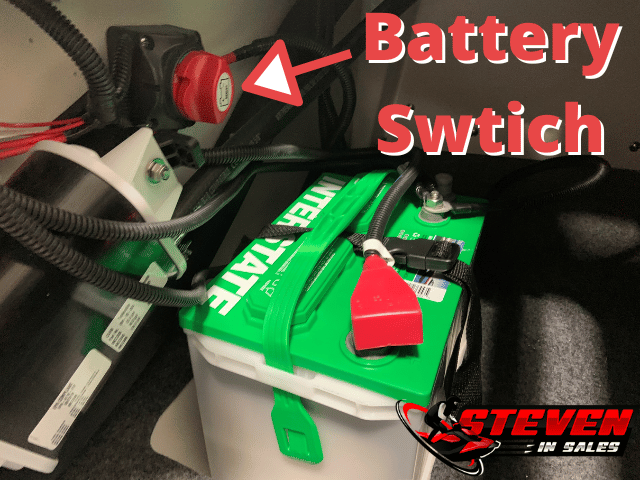I’m a huge fan of solar battery chargers for jet skis, out of necessity, after seeing so many customers having trouble maintaining their batteries.
Like clock work, customers were coming in every year at the start of the season with dead batteries.
Some customers tried to solve this problem with battery switches, but it was never perfect and didn’t solve the heart of the problem. The solution is simple, a 5-watt or less is what they needed and is what I use to keep my batteries going strong for years.
This brings up a new question, what is the best solar battery charger and which one should you use?
The Best Solar Battery Charger
The best solar charger will be one that is 12-volt and under 5-watt, along with it being weatherproof.
Here are my top picks:
- ECO-WORTHY 12 Volt 5 Watt Solar Trickle (Amazon Link Ad)
- Sunway Solar Car Battery Trickle (Amazon Link Ad)
- SUNAPEX 12V Solar trickle (Amazon Link Ad)
Using these chargers and quick connections is the best way to keep your batt charged and ready to go!
How To Maintain Your Battery
The biggest reason you want to use a solar charger is because it works the best to maintain your battery.
Jet skis use a lead acid battery and if it’s not used for months it will lose its charge and die. This is why so many customers have to buy a new one every year, as they don’t ride them in the off-season.
One, especially 5-watt and under, doesn't necessarily charge the battery, but instead helps maintain and keep them alive. The slight charge is just enough to keep it active and going strong for years.
We only want to keep it active and alive, we don’t need to charge it. The panel can charge the battery if given enough time, but it’s the maintaining of the charge that we want.
Solar Vs. Wall
The reason why you want to use a solar charger over a regular charger you plug into a wall outlet is for 3 reasons.
- No need for a power outlet; not every dock has power.
- Don’t output a lot of power, so the worry of electrical shock is much less compared to wall outlets.
- Simpler design, most don’t even have or need a circuit board.
Overall, it’s just better. They are stored outside and kept in the sunlight anyway, so might as well keep a panel charger on it.
Battery Switch?
Before solar chargers, I had customers who insisted on having a battery switch. Most boats have switches, and this is where many of them got the idea to help keep their batteries alive during the off-season.
After installing a few battery switches, I learned it’s not helpful and often caused future problems.
The switch was also not solving the heart of the problem, as the customer would have it off, but still come to a dead batt at the start of the season.
The problem is not that the PWC uses a little bit of power when off, but the battery was going flat because it was not being used.
The reason switches don’t work for PWCs is that the battery is much smaller than a boat’s. Smaller lead acid batteries sulfate faster, and that is why they don’t do as well as the larger boat batteries.
Instead of doing another switch for a customer, I suggested he use a solar charger. Not only was it charger cheaper to install, but it would work way better for his needs because he kept the machine outside on his slip. To this day, the first thing he tells me every time we meet is how great of an idea it’s been for him.
I, personally, use a one for my Spark and get at least 5 years out of a battery. Batteries do wear out, but to get more than a year out of one, you’re going to want to use something to keep it charged.
5-Watt Max
The reason you want to stay at or under 5-watt is because we’re not wanting to charge the battery, but instead maintain them.
When you start to go over 5-watts you need a charge regulator that will turn on and off as it needs it. A too powerful of a panel and you could cook the battery, that is why the regulator is needed.
If you stay at 5-watts or less, you never produce enough power to worry about. I often recommend getting a 1.5-watt solar charger as it’s a good sweet spot, but 5-watts is good if the panel is in a shady spot.
Direct Sunlight NOT Needed
The panel doesn’t need to be in direct sunlight all day, but you want the sun to shine on it for at least 2 hours a day.
Even on cloudy days, the panel can pick up enough charge to make it worth it.
Again, we’re not wanting to charge them, but instead maintain it. So not much power is needed, just a little bit of sun is enough to keep them active and happy. Going days without getting sun is fine too, it’s when the battery goes months without being used that it becomes a problem.



